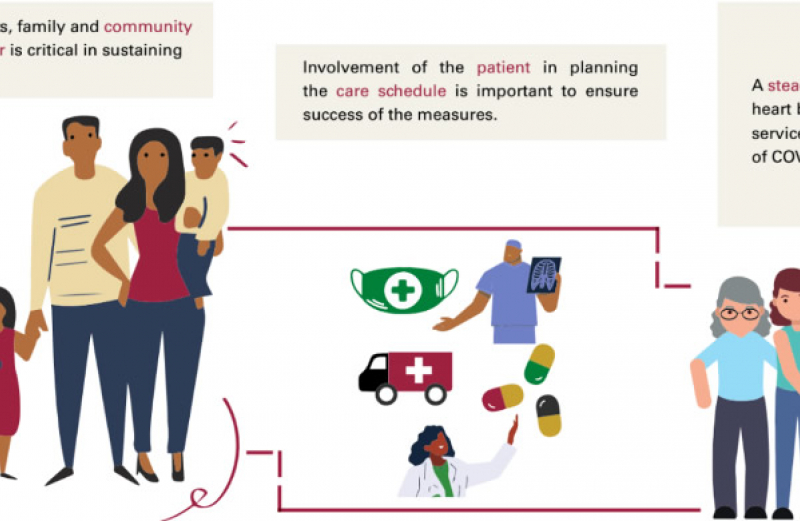Maintaining the Momentum in Addressing Tuberculosis in the Light of the COVID-19 Pandemic in Africa.

We have seen how the world has come together to tackle the COVID-19 pandemic, however it is imperative to ensure that essential services and operations for dealing with the long-standing health problems such as TB continue so as to protect the lives of people with TB and other diseases. Providers of essential health services, including national programmes to combat TB, need to be actively engaged in ensuring an effective and rapid response to COVID-19 while ensuring that TB services are maintained. According to The World Health Organisation (WHO) in an Information Note released on 12 May 2020, modelling work suggests that if the COVID-19 pandemic led to a global reduction of 25% in expected TB detection for 3 months – a realistic possibility given the levels of disruption in TB services being observed in multiple countries – then we could expect a 13% increase in TB deaths, bringing us back to the levels of TB mortality that we had 5 years ago. The WHO further estimates that between 2020 and 2025 an additional 1.4 million TB deaths could be registered as direct consequence of the COVID-19 pandemic.
Dr. Patrick Lungu, TB Programme Manager in Zambia elaborated on how COVID-19 in Zambia has negatively affected TB Indicators. “Since the notification of the first two cases of COVID-19 in Zambia on 18th March 2020, modification of service delivery was initiated in response to the outbreak,” says Dr. Lungu. “This resulted into a low turnout of patients in the outpatient department (OPD) resulting into reduced number of presumptive TB cases being identified, inadvertently, TB notifications plummeted,” he stated.
Below are the recommendations on how to maintain momentum in addressing tuberculosis in the light of the covid-19 pandemic in Africa:
Sustaining Screening and Diagnosis:
- Maintained access to services.
- Clear guidance to the general public about where and when to seek services.
- Education about the overlap in symptoms and presentation of COVID-19 and TB.
- Leverage Xpert for COVID-19 while maintaining TB services
- Extended operational hours.
- Deployment of additional staff.
- Monitoring and assignment of workload.
- Support specimen transportation.
- A shift from door-to-door campaigns to a targeted approach (mainly household contact tracing). Geospatial mapping of patients is helpful for this approach.
Sustaining Treatment:
- Orientation of healthcare workers in the adjustment in treatment modalities and provision of job aids.
- A shift from the weekly or monthly prescription with an option of giving enough drugs for the entire intensive or continuation phase.
- Adjusting patient follow ups to telephone calls.
- Strengthening the involvement of family members in the care of the patient.
- Psychosocial and nutritional support is of paramount importance.
Use of Electronic Platforms in Response to TB in the era of COVID-19:
- Sustain capacity building, strategic meetings through electronic platforms such ZOOM/Google Teams.
- Platforms such electronic laboratory information system for speedy transmission of results to both the patient and the care providers, and facilitate linkage to care.
- E- DOT to enhance treatment monitoring during total/partial lockdown.
